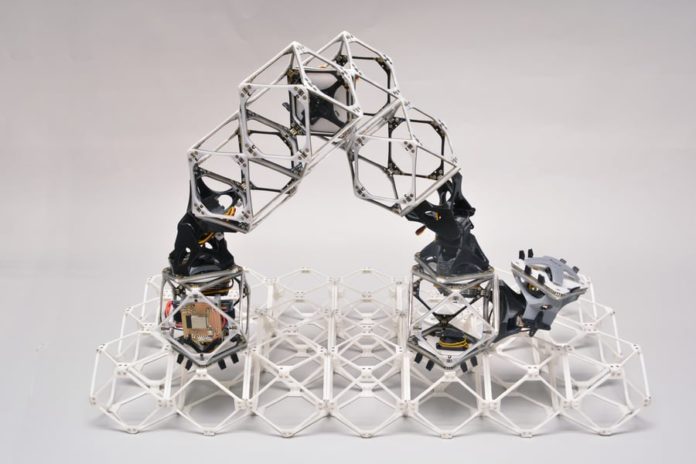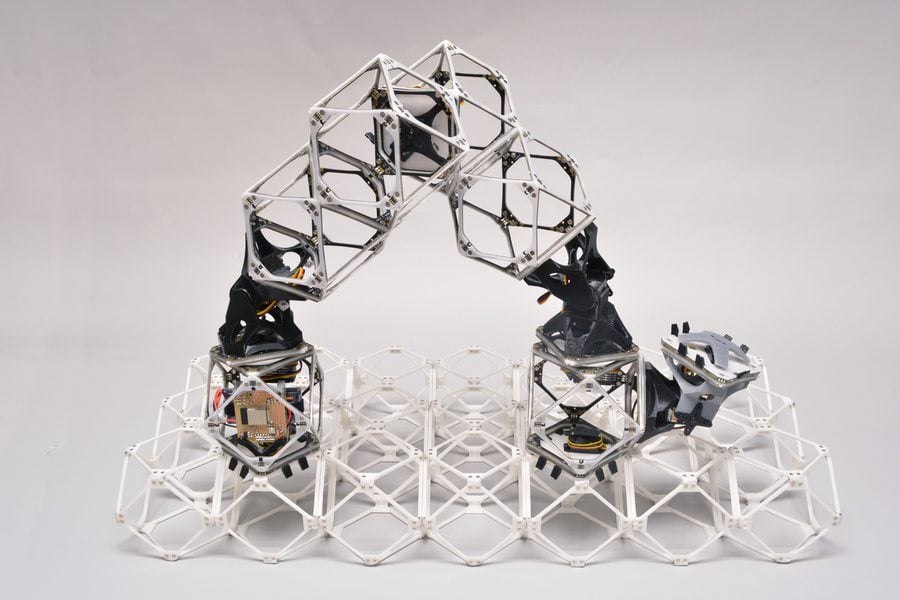Engineers at the Massachusetts Institute of Technology (MIT) are developing a group of robots with built-in intelligence that are capable of building almost anything, including buildings, vehicles, and even replicating themselves into bigger robots.
This innovative research was published in the journal Nature Communications Engineering in a study authored by CBA doctoral student Amira Abdel-Rahman, Professor and CBA Director Neil Gershenfeld, and three others.
The researchers revealed they are working with the aviation industry, car companies, and NASA on the new technology.
“The new work, from MIT’s Center for Bits and Atoms (CBA), builds on years of research, including recent studies demonstrating that objects such as a deformable airplane wing and a functional racing car could be assembled from tiny identical lightweight pieces — and that robotic devices could be built to carry out some of this assembly work,” MIT announced on Tuesday, Nov. 22.
“Now, the team has shown that both the assembler bots and the components of the structure being built can all be made of the same subunits, and the robots can move independently in large numbers to accomplish large-scale assemblies quickly,” it added.
The identical subunits are called voxels that each can carry both power and data from one unit to the next.
“The robots themselves consist of a string of several voxels joined end-to-end. These can grab another voxel using attachment points on one end, then move inchworm-like to the desired position, where the voxel can be attached to the growing structure and released there,” MIT said.
“When we’re building these structures, you have to build in intelligence,” Professor and CBA Director Neil Gershenfeld said. “What emerged was the idea of structural electronics — of making voxels that transmit power and data as well as force… There’s no wires. There’s just the structure.”
To learn more about this new technology, watch the video below:




